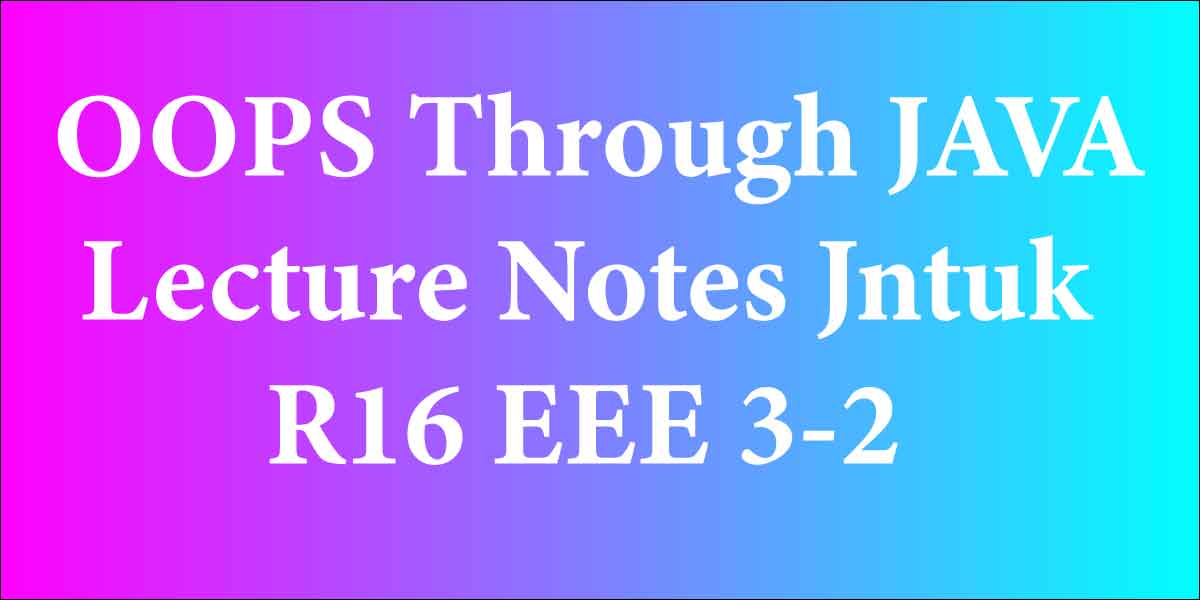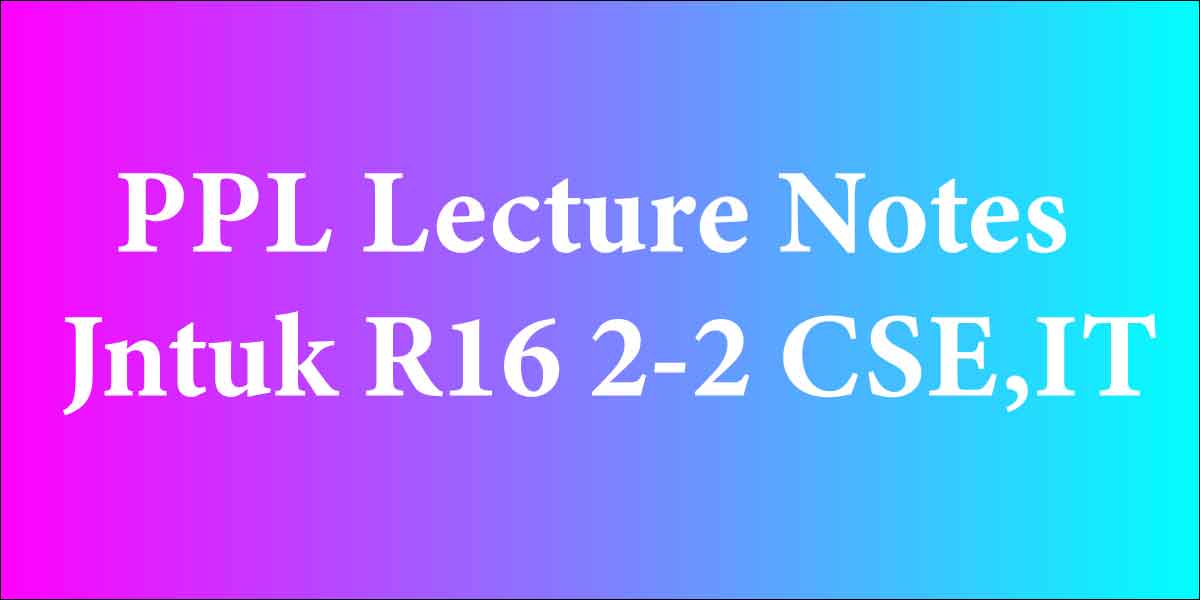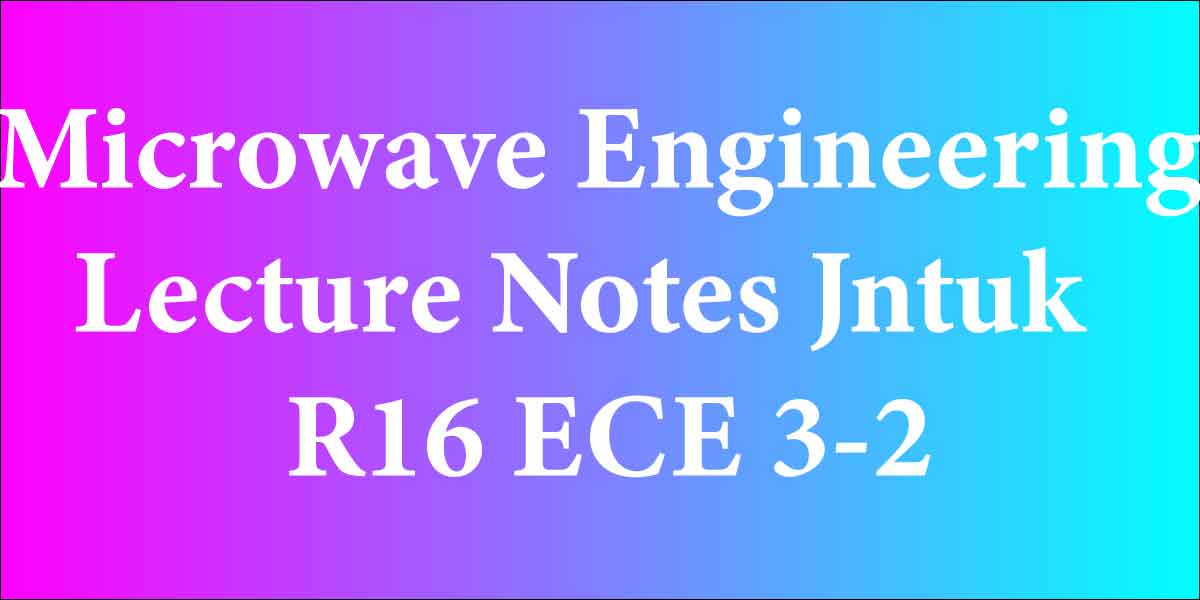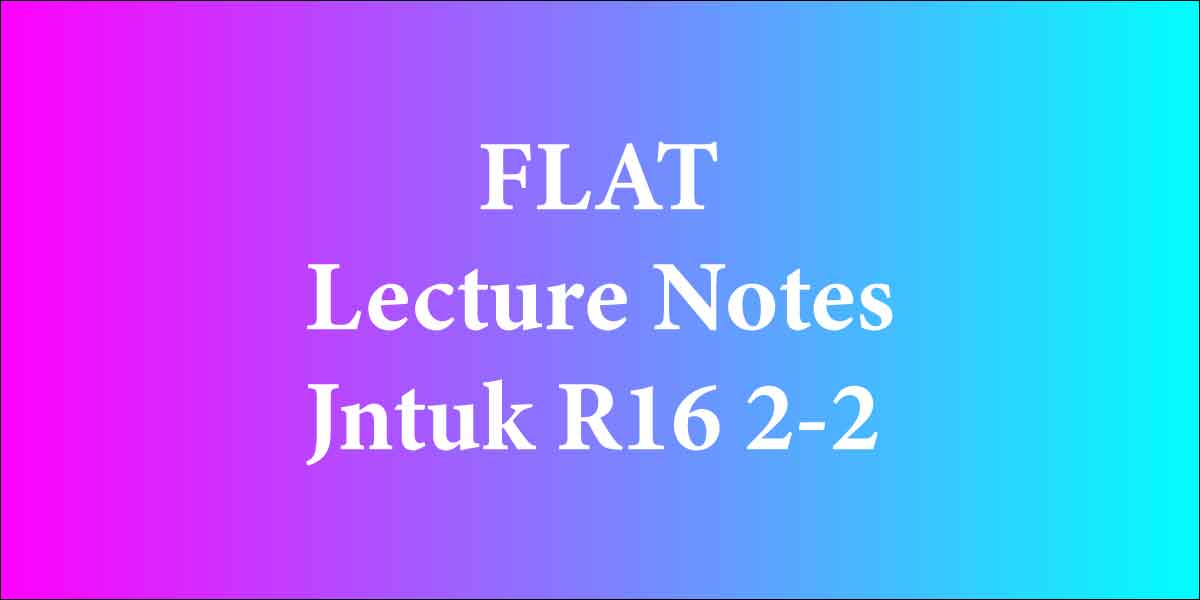
by Rishi | Apr 4, 2020 | Jntuk lecture notes
OOPS Through JAVA
OBJECTIVES:
• Understanding the OOP’s ideas, categories and objects, threads, files, applets, swings and act.
• This course introduces programing mistreatment the JAVA programing language with object-oriented programming principles.
• stress is placed on event-driven programming strategies, as well as making and manipulating objects, classes, and mistreatment Java for network level programming and middleware development
UNIT-I:
Introduction to OOP, procedural programing language and object familiarised language, principles of OOP, applications of OOP, history of java, java options, JVM, program structure. Variables, primitive knowledge varieties, identifiers, literals, operators, expressions, precedence rules and associativity, primitive sort conversion and casting, flow of management.
UNIT-II:
categories and objects, category declaration, making objects, methods, creators and constructor overloading, garbage man, importance of static keyword and examples, this keyword, arrays, instruction arguments, nested categories.
UNIT-III:
Inheritance, varieties of inheritance, super keyword, final keyword, predominate and abstract category. Interfaces, making the packages, mistreatment packages, importance of CLASSPATH and java.lang package. Exception handling, importance of strive, catch, throw, throws and at last block, userdefined exceptions, Assertions.
UNIT-IV:
Multithreading: introduction, thread life cycle, creation of threads, thread priorities, thread synchronization, communication between threads. Reading knowledge from files and writing knowledge to files, random access file,
UNIT-V:
application category, application structure, application life cycle, sample application programs. Event handling: event delegation model, sources of event, Event Listeners, adapter categories, inner categories.
II Year – II Semester
L T P C
4 0 0 3
UNIT-VI:
AWT: introduction, elements and containers, Button, Label, Checkbox, Radio Buttons, List Boxes, selection Boxes, instrumentation category, Layouts, Menu and Scrollbar.
OUTCOMES:
• perceive Java programming ideas and utilize Java Graphical program in Program writing.
• Write, compile, execute and troubleshoot Java programming for networking ideas.
• Build Java Application for distributed setting. • style and Develop multi-tier applications.
• determine and Analyze Enterprise applications.
TEXT BOOKS:
1. the whole Reference Java, eighth edition, Herbert Schildt, TMH.
2. Programming in JAVA, Sachin Malhotra, SaurabhChoudary, Oxford.
3. Introduction to java programming, seventh edition by Y Daniel Liang, Pearson.
REFERENCE BOOKS:
1. Swing: Introduction, JFrame, JApplet, JPanel, Componets in Swings, Layout Managers in a pair of. Swings, JList and JScrollPane, Split Pane, JTabbedPane, JTree, JTable, Dialog Box.

by Rishi | Mar 31, 2020 | Jntuk lecture notes
PRINCIPLES OF PROGRAMMING LANGUAGES
OBJECTIVES:
• to know and describe syntax and linguistics of programming languages
• to know information, data types, and basic statements
• to know call-return design and ways in which of implementing them
• to know object-orientation, concurrency, and event handling in programming languages
• To develop programs in non-procedural programming paradigms
UNIT- I:
Syntax and semantics: Evolution of programming languages, describing syntax, context, free grammars, attribute grammars, describing linguistics, lexical analysis, parsing, algorithmic – good bottom – up parsing
UNIT- II:
information, data types, and basic statements: Names, variables, binding, kind checking, scope, scope rules, time period and trash pickup, primitive information varieties, strings, array varieties, associative arrays, record varieties, union varieties, pointers and references, Arithmetic expressions, full operators, kind conversions, relative and Boolean expressions , assignment statements , mixed mode assignments, management structures – choice, iterations, branching, guarded Statements
UNIT- III:
Subprograms and implementations: Subprograms, style problems, native referencing, parameter passing, full strategies, generic strategies, style problems for functions, linguistics of decision and come, implementing straightforward subprograms, stack and dynamic native variables, nested subprograms, blocks, dynamic scoping
UNIT- IV:
Object- orientation, concurrency, and event handling: Object – orientation, style problems for OOP languages, implementation of object, orientating constructs, concurrency, semaphores, Monitors, message passing, threads, statement level concurrency, exception handling, event handling
UNIT -V:
useful programming languages: Introduction to lambda calculus, fundamentals of useful programming languages, Programming with theme, – Programming with cc,
II Year – II Semester
L T P C
4 0 0 3
UNIT -VI:
Logic programming languages: Introduction to logic and logic programming, – Programming with logic programming, multi – paradigm languages
OUTCOMES:
• Describe syntax and linguistics of programming languages
• justify information, data types, and basic statements of programming languages
• style and implement subroutine constructs, Apply object – orientating, concurrency, and event handling programming constructs
• Develop programs in theme, ML, and logic programming
• perceive and adopt new programming languages
TEXT BOOKS:
one. Robert W. Sebesta, “Concepts of Programming Languages”, Tenth Edition, Addison Wesley, 2012.
2. Programming Langugaes, Principles & Paradigms, 2ed, Allen B Tucker, Robert E Noonan, TMH
REFERENCE BOOKS:
one. R. Kent Dybvig, “The theme programming language”, Fourth Edition, MIT Press, 2009.
2. Jeffrey D. Ullman, “Elements of cc programming”, Second Edition, learner Hall, 1998.
3. Richard A. O’Keefe, “The craft of Prolog”, MIT Press, 2009.
4. W. F. Clocksin and C. S. Mellish, “Programming in Prolog: exploitation the ISO Standard”, Fifth Edition, Springer, 2003

by Rishi | Mar 31, 2020 | Jntuk lecture notes
Microwave Engineering
JntukMaterials is a Btech Lectures notes provider here you can download the Ece 3-2 Microwave Engineering Materials for Jntuk R16 Students.

by Rishi | Mar 31, 2020 | Jntuk lecture notes
Formal Languages and Automata Theory
OBJECTIVE:
• Introduce the scholar to the ideas of Theory of computation in applied science
• the scholars ought to acquire insights into the connection among formal languages, formal Grammars and automat.
UNIT – I:
Finite Automata Why Study Automata Theory? The Central ideas of Automata Theory, Automation, Finite Automation, Transition Systems, Acceptance of a String by a Finite Automation, DFA, style of DFAs, NFA, style of NFA, Equivalence of DFA and NFA, Conversion of NFA into DFA, Finite Automata with E-Transition, reduction of Finite Automata, sandy and Moore Machines, Applications and Limitation of Finite Automata.
UNIT – II:
Regular Expressions Regular Expressions, Regular Sets, Identity Rules, Equivalence of 2 Regular Expressions, Manipulations of standard Expressions, Finite Automata, and Regular Expressions, lay Conversion, Equivalence between Finite Automata and Regular Expressions, Pumping Lemma, Closers Properties, Applications of standard Expressions, Finite Automata and Regular Grammars, Regular Expressions and Regular Grammars.
UNIT – III:
Context Free synchronic linguisticss Formal Languages, Grammars, Classification of Grammars, A. Noam Chomsky Hierarchy Theorem, Context Free Grammar, left and right Derivations, take apart Trees, Ambiguous Grammars, Simplification of Context Free Grammars-Elimination of Useless Symbols, EProductions and Unit Productions, traditional kinds for Context Free Grammars-Chomsky traditional kind and Greibach traditional Form, Pumping Lemma, Closure Properties, Applications of Context Free Grammars.
UNIT – IV:
Pushdown Automata Pushdown Automata, Definition, Model, Graphical Notation, fast Description Language Acceptance of pushdown Automata, style of Pushdown Automata, settled and Non – settled Pushdown Automata, Equivalence of Pushdown Automata and Context Free Grammars Conversion, 2 Stack Pushdown Automata, Application of Pushdown Automata.
UNIT – V:
Turning Machine Turing machine, Definition, Model, illustration of Alan Turing Machines-Instantaneous Descriptions, Transition Tables and Transition Diagrams, Language of a Turing machine, style of Alan Turing Machines, Techniques for Turing machine Construction, sorts of Alan Turing Machines, Church’s Thesis, Universal Turing machine, Restricted Turing machine.
II Year – II Semester
L T P C
4 0 0 3
UNIT – VI:
Computability Decidable and Un-decidable issues, Halting drawback of Alan Turing Machines, Post’s Correspondence drawback, changed Post’s Correspondence drawback, categories of P and NP, NPHard and NP-Complete issues.
OUTCOMES:
• Classify machines by their power to acknowledge languages,
• use finite state machines to resolve issues in computing,
• justify settled and non-deterministic machines,
• Comprehend the hierarchy of issues arising within the applied science
TEXT BOOKS:
one. Introduction to Automata Theory, Languages and Computation, J.E.Hopcroft, R.Motwani and J.D.Ullman, third Edition, Pearson, 2008.
2. Theory of laptop Science-Automata, Languages and Computation, K.L.P.Mishra and N.Chandrasekharan, third Edition, PHI, 2007.
REFERENCE BOOKS:
one. Formal Language and Automata Theory, K.V.N.Sunitha and N.Kalyani, Pearson, 2015.
2. Introduction to Automata Theory, Formal Languages and Computation, Shyamalendu Kandar, Pearson, 2013.
3. Theory of Computation, V.Kulkarni, university Press, 2013.
4. Theory of Automata, Languages and Computation, Rajendra Kumar, handler Hill, 2014.
by Rishi | Mar 23, 2020 | Jntuk lecture notes
PRESTRESSED CONCRETE
Course Studying Goals:
The target of this course is:
• Familiarize College students with ideas of prestressing
• Equip pupil with completely different techniques and units utilized in prestressing
• Perceive the completely different losses of prestress together with quick and long run losses
• Familiarize college students with the evaluation and design of prestressed concrete members
below flexure, shear and torsion
Course Outcomes:
On the finish of this course the coed will have the ability to
• Perceive the completely different strategies of prestressing
• Estimate efficient prestress together with the quick and long run losses
• Analyze and design prestressed concrete beams below flexure and shear
• Perceive the related IS Codal provisions for prestressed concrete
SYLLABUS:
UNIT-I Fundamental ideas of Prestressing- Benefits and Functions of Prestressed
Concretes, Excessive Power Concrete- Permissible Stresses, Shrinkage, Creep, Deformation
Traits, Excessive power Metal- Sorts, Power- Permissible Stresses- Rest of
Stress, Cowl Necessities.
UNIT-II Prestressing Methods- Introduction, Tensioning units, Pre-tensioning Methods,
Put up tensioning Methods, Fundamental Assumptions in Evaluation of prestress and design, Evaluation of
prestress, Resultant Stresses at a section- strain line- Ideas of load balancing- Stresses
in Tendons, Cracking second.
UNIT-III Losses of Pre-stressing- Lack of Pre-stress in pre-tensioned and publish tensioned
members resulting from varied causes -Elastic shortening of concrete, shrinkage of concrete, creep
of concrete, Rest stress in metal, slip in anchorage, differential shrinkage- bending of
members and frictional losses- Complete losses allowed for design
UNIT-IV Design for Flexural resistance- Kinds of flexural failure – Code proceduresDesign of sections for flexure- Management of deflections- Components influencing DeflectionPrediction of quick time period and long run deflections.
UNIT-V Design for Shear and Torsion- Shear and Principal Stresses- Design of Shear
reinforcements- Codal Provisions- Design for Torsion, Design for Mixed bending, shear
and torsion.
IV 12 months – II Semester
L T P C
four zero zero 3
PRESTRESSED CONCRETE
UNIT-VI Switch of Prestress in pre tensioned members- Transmission length- Bond
stresses- finish zone reinforcement- Codal provisions- Anchorage zone Stresses in Put up
tensioned members- Stress distribution in finish block- Anchorage Zone reinforcement.
Textual content Books
1. Prestressed Concrete, N. Krishna Raju, Tata McGraw hill
2. Prestressed Concrete, S. Ramamrutham
References:
1. Prestressed Concrete, P. Dayaratnam
2. Prestressed Concrete, T. Y. Lin & Burns, Wiley Publications
by Rishi | Mar 23, 2020 | Jntuk lecture notes
CONSTRUCTION TECHNOLOGY AND MANAGEMENT
Course Studying Aims:
The target of this course is:
• to introduce to the coed the idea of challenge administration together with community
drawing and monitoring
• to introduce numerous equipments like earth transferring tools, vans and dealing with
tools, combination manufacturing and building tools and equipment, associated
to constriction.
• to introduce the significance of security in building initiatives
Course Outcomes:
Upon the profitable completion of this course, the scholars will be capable of:
• respect the significance of building planning
• perceive the functioning of varied earth transferring tools
• know the strategies of manufacturing of combination merchandise and concreting and utilization of
equipment required for the works.
• apply the gained data to challenge administration and building strategies
SYLLABUS:
UNIT- I Development challenge administration and its relevance – qualities of a challenge
supervisor – challenge planning – coordination –scheduling – monitoring – bar charts – milestone
charts – vital Path Technique – Functions
UNIT -II Venture Analysis and Assessment Method – price evaluation – updating – crashing for
optimum price – crashing for optimum assets – allocation of assets
UNIT- III Development tools – economical concerns – earthwork tools –
Vans and dealing with tools – rear dump vans – capacities of vans and dealing with
tools – calculation of truck manufacturing – compaction tools – varieties of compaction
rollers
UNIT –IV Hoisting and earthwork tools – hoists – cranes – tractors – bulldozers –
graders – scrapers– draglines – clamshell buckets
IV Yr – II Semester
L T P C
Four zero zero 3
CONSTRUCTION TECHNOLOGY AND MANAGEMENT
UNIT -V Concreting tools – crushers – jaw crushers – gyratory crushers – impression
crushers – choice of crushing tools – screening of combination – concrete mixers –
mixing and inserting of concrete – consolidating and ending
UNIT –VI Development strategies – earthwork – piling – inserting of concrete – kind work –
fabrication and erection – high quality management and security engineering
Textual content Books:
1. Development Planning Tools and Strategies, Peurifoy and Schexnayder , Shapira,
Tata Mcgrawhill
2. Development Venture Administration Principle and Follow, Kumar Neeraj Jha (2011),
Pearson.
3. Development Expertise, Subir Ok. Sarkar and Subhajit Saraswati, Oxford College
press.
4. Venture Planning and Management with PERT and CPM, B. C. Punamia and Ok Ok
Khandelwal, Laxmi Publications Pvt Ltd. Hyderabad.
References:
1. Development Venture Administration – An Built-in Strategy, Peter Fewings , Taylor
and Francis
2. Development Administration Rising Traits and Applied sciences, Trefor Williams ,
Cengage studying.
3. Hand Ebook of Development Administration, P. Ok. Pleasure, Trinity Press Chennai, New
Delhi.




